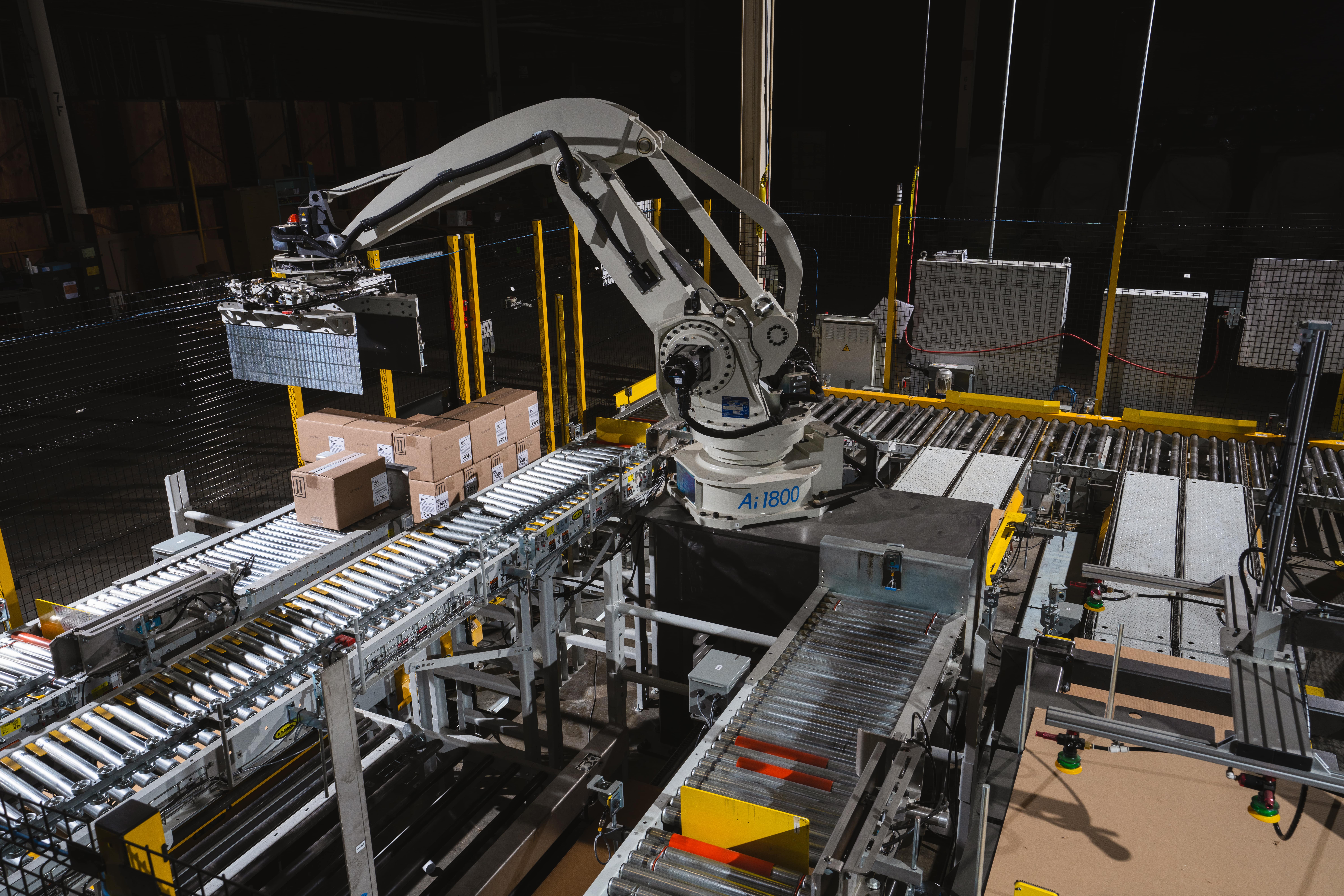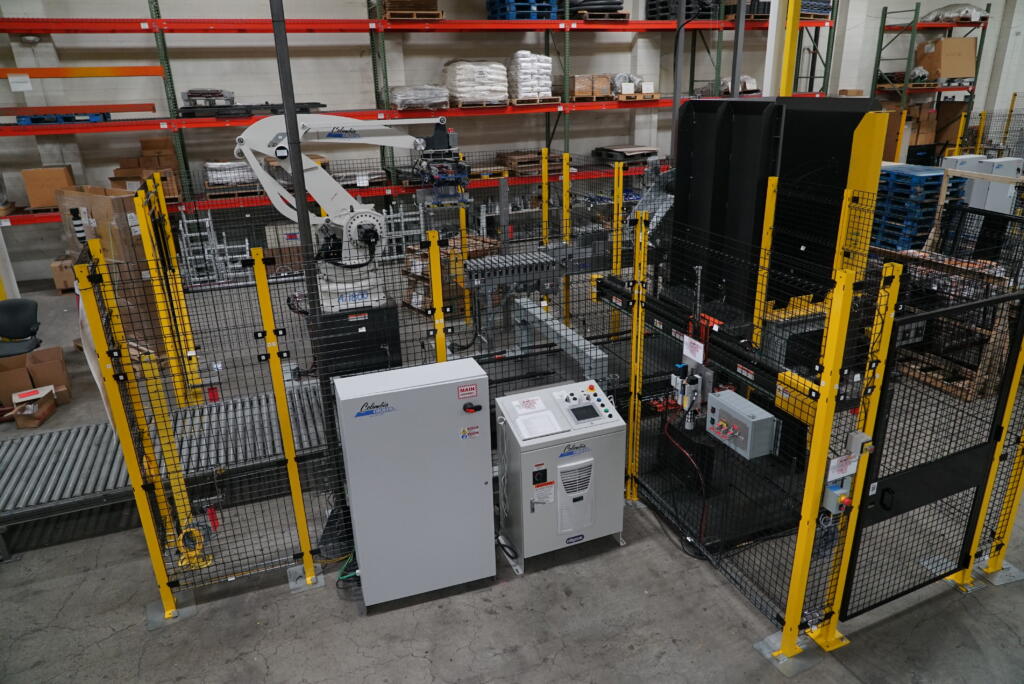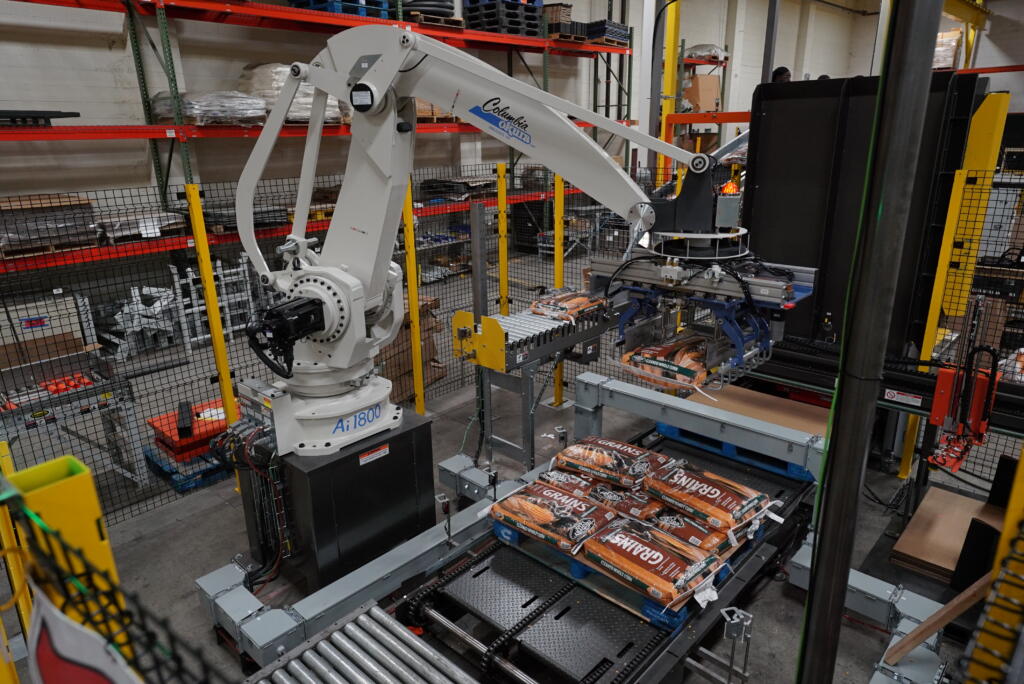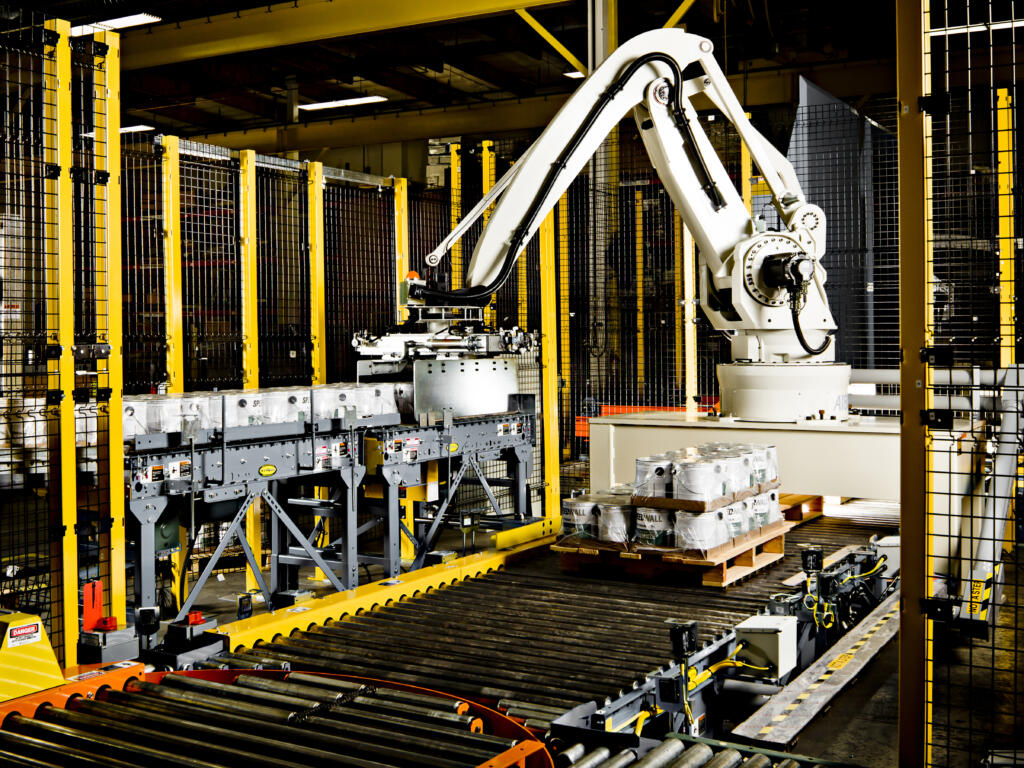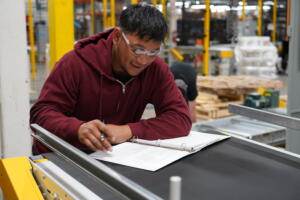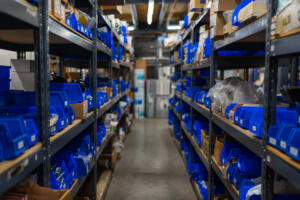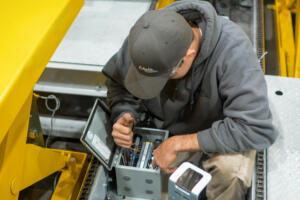Are you ready to UPDATE your Robot?
Contact us to understand how we can help.
Find answers to common questions about replacing your palletizer’s robot.
What existing equipment can be reused?
Every piece of existing equipment that is not replaced or upgraded can be reused. From conveyors to label applicators and barcode readers, our installation team will ensure all existing peripheral equipment is functioning as it was before the robot replacement.
How will this upgrade impact our current operations?
We strive to minimize disruptions during the upgrade process by working with your team to find an ideal time for the current robot to be replaced. Whether it is on a weekend, holiday, or production down-season, our team will work with you to schedule an optimal time.
How long will the upgrade process take?
The duration of the installation depends on the complexity of the upgrade. Typical installations can range from a few days to a few weeks. Our service team will work closely with your facility personnel to arrange and schedule the appropriate time for the installation.
Are their credits available for robot replacements?
If you wish to trade-in your existing robot and control cabinet, we offer credit toward your robot replacement. During the installation, our installation tech will get the robot and cabinet ready to ship back with no interruption to your operations or the new robot’s installation.

